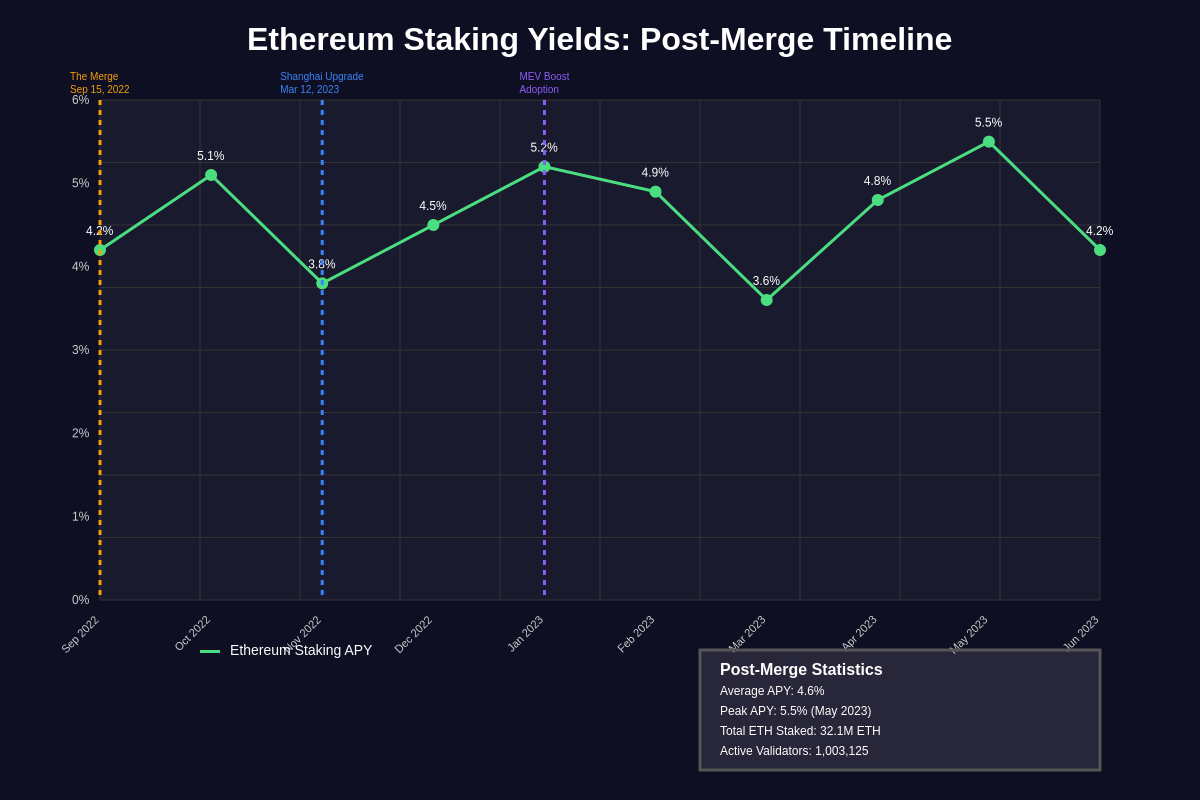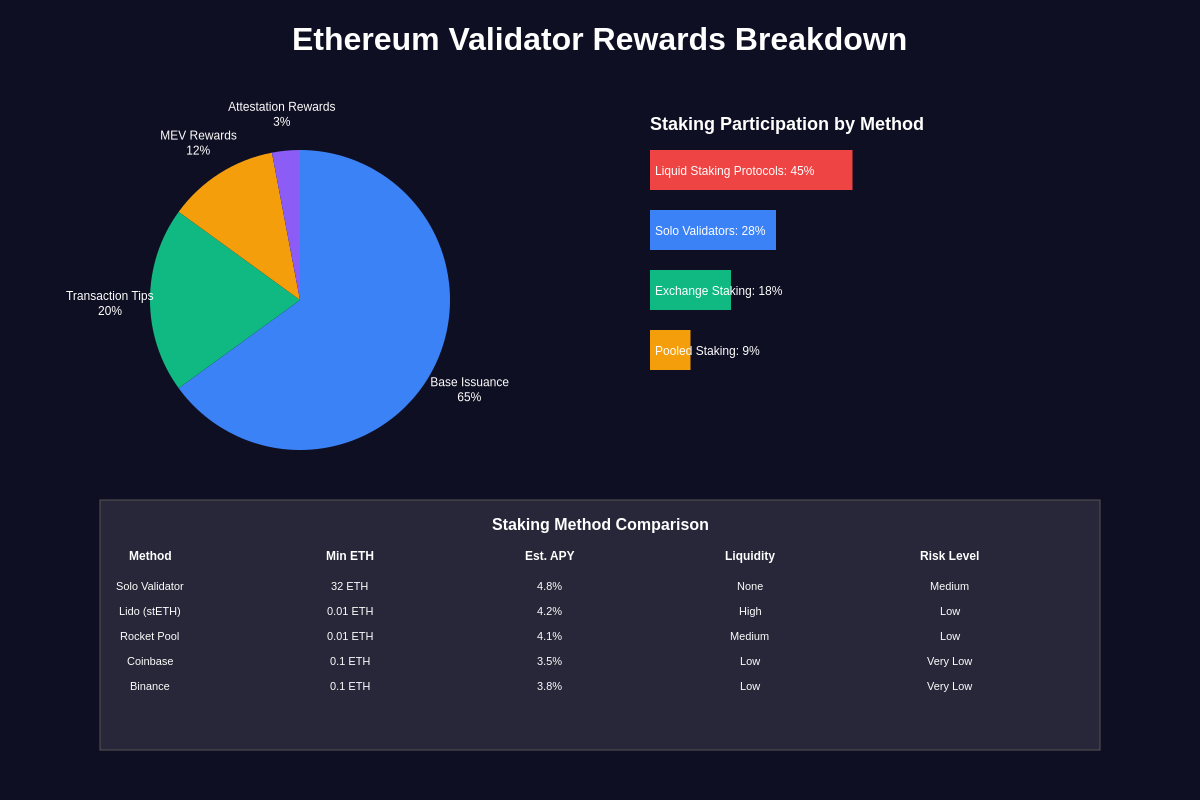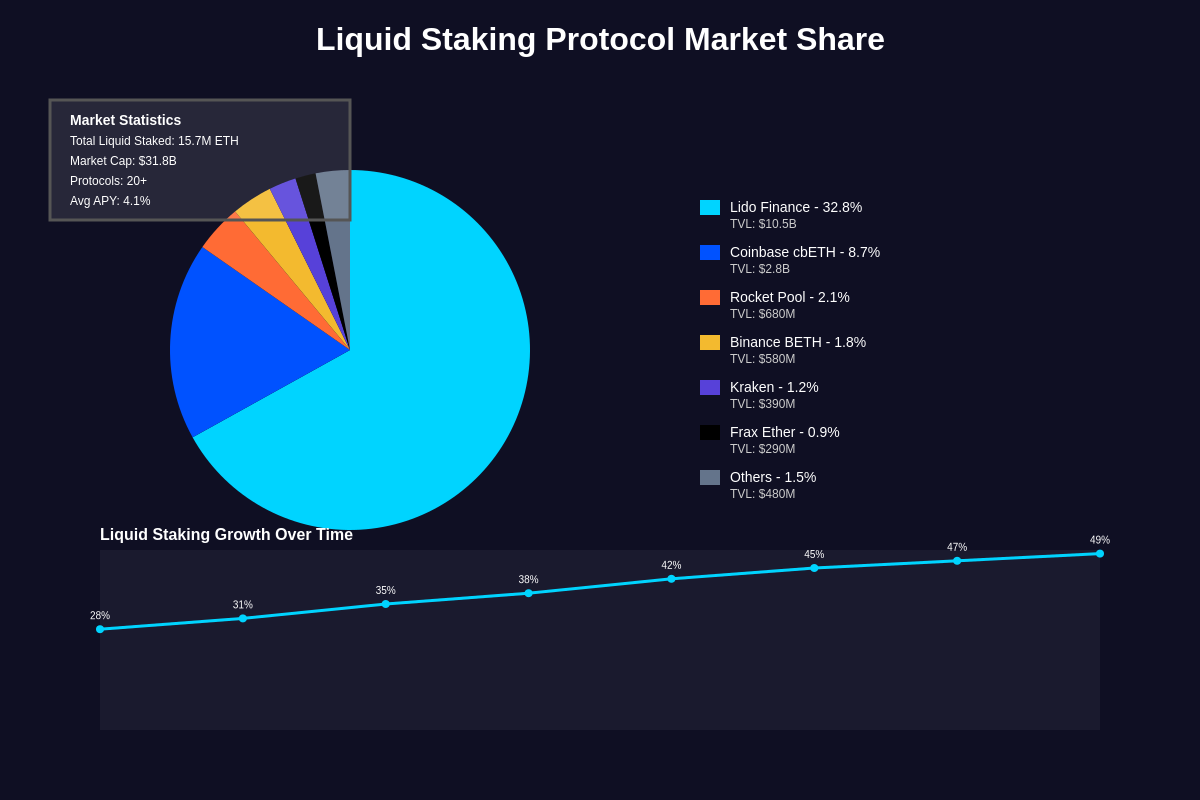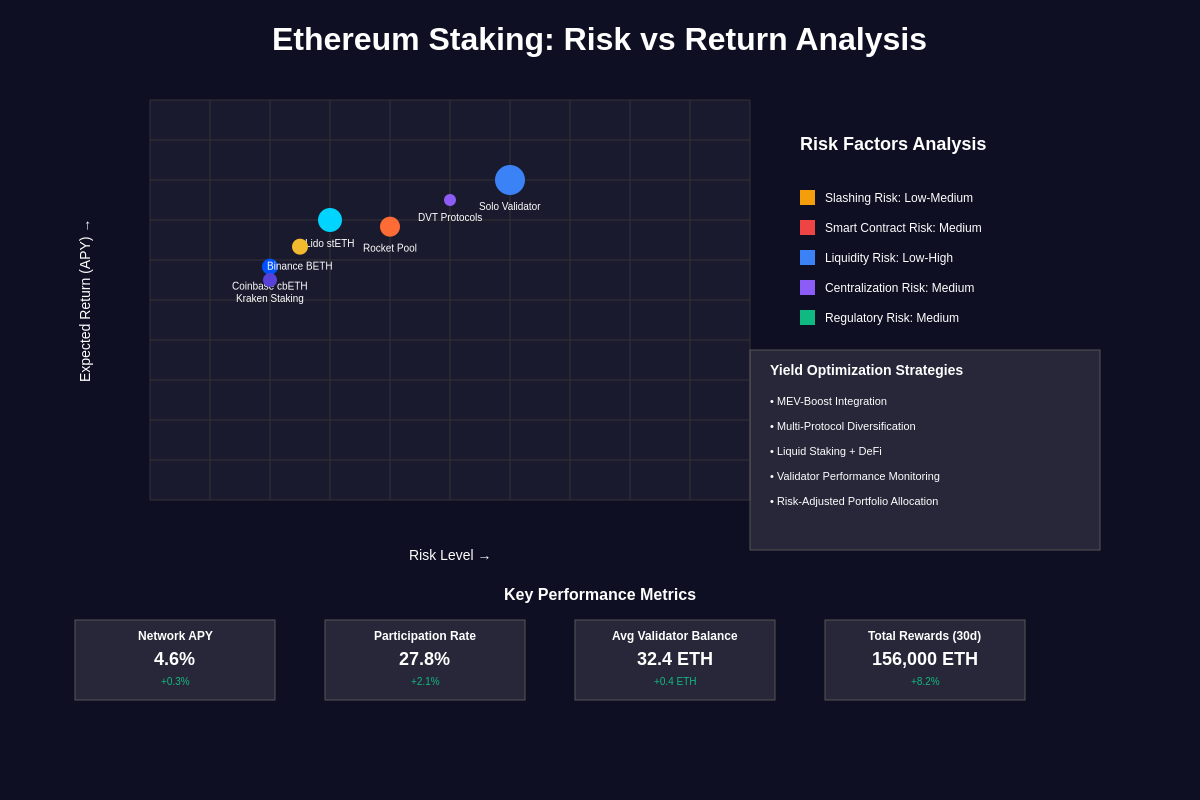TradingView Pine Script Reference
The Revolutionary Shift to Proof-of-Stake
The Ethereum network’s transition from proof-of-work to proof-of-stake through The Merge in September 2022 fundamentally transformed how participants earn rewards from network participation, introducing a completely new economic model that has reshaped the entire cryptocurrency staking landscape. This monumental shift eliminated energy-intensive mining operations and replaced them with a validator-based consensus mechanism that allows ETH holders to earn yields by staking their tokens and participating in network security.
The proof-of-stake transition has created unprecedented opportunities for passive income generation within the Ethereum ecosystem, with staking yields becoming a critical factor for institutional and retail investors evaluating Ethereum as both a technological platform and an investment vehicle. Understanding these post-merge returns requires comprehensive analysis of validator economics, network dynamics, and the various factors that influence staking profitability across different participation methods and market conditions.

The complexity of Ethereum staking yields stems from multiple interconnected variables including the total amount of ETH staked on the network, validator performance metrics, network activity levels, and the various fees and penalties associated with different staking approaches. Professional investors and DeFi protocols have developed sophisticated strategies to optimize staking returns while managing the risks associated with validator slashing, liquidity constraints, and smart contract vulnerabilities inherent in liquid staking solutions.
Historical Context and Pre-Merge Expectations
Before The Merge, the Ethereum community extensively modeled and debated the expected returns from proof-of-stake validation, with various estimates ranging from 3% to 15% annual percentage yield depending on network participation levels and fee market dynamics. These pre-merge projections were based on theoretical models that attempted to account for the complex interplay between validator rewards, network fees, and the anticipated level of ETH staking participation across the broader ecosystem.
The transition period leading up to The Merge saw significant speculation about optimal staking strategies, with early adopters participating in the Beacon Chain testnet to gain experience with validator operations while others waited for liquid staking solutions that would provide greater flexibility and lower technical barriers to entry. Market participants closely monitored ETH price movements on TradingView to understand how the approaching consensus mechanism change might affect token valuation and staking economics.
The actual implementation of The Merge validated some theoretical predictions while revealing unexpected dynamics that have continued to influence staking yields throughout the post-merge period. Network participation rates exceeded many conservative estimates, leading to lower per-validator returns than some optimistic projections had suggested, while the elimination of mining rewards created deflationary pressure that has supported ETH price appreciation and enhanced the total return profile for stakers.
Early post-merge analysis revealed that validator economics were more sensitive to network congestion and fee market dynamics than many participants had anticipated, with periods of high network activity generating significantly higher rewards through maximum extractable value (MEV) and priority fees, while quiet periods saw returns decline toward the base issuance rate.
Current Staking Yield Landscape
The contemporary Ethereum staking yield environment presents a complex ecosystem of opportunities ranging from direct validator operation to liquid staking protocols and centralized exchange staking services, each offering different risk-return profiles and operational requirements. Current network-wide staking yields fluctuate between approximately 3% to 6% annually, with significant variation based on participation method, validator performance, and broader market conditions affecting fee generation and MEV opportunities.
Direct validator operation, requiring 32 ETH and technical expertise, typically offers the highest potential returns as operators retain full control over MEV extraction and avoid protocol fees charged by intermediary services. However, this approach demands substantial technical knowledge, ongoing maintenance responsibilities, and exposes operators to slashing risks if validators fail to perform their duties correctly or exhibit behavior that could be interpreted as malicious by the network consensus mechanism.
Liquid staking protocols have emerged as the dominant participation method for most ETH holders, offering tokenized representations of staked ETH that can be used in DeFi applications while earning staking rewards. Major protocols like Lido, Rocket Pool, and Coinbase’s cbETH each employ different operational models that affect the net yields available to participants, with protocol fees typically ranging from 5% to 15% of gross staking rewards.
The ETH staking data available on TradingView shows how market conditions directly impact staking profitability, with periods of high network congestion and DeFi activity generating substantially higher validator rewards through increased transaction fees and MEV opportunities that can temporarily boost annual yields above 8% during peak activity periods.
Liquid Staking Protocol Analysis
Liquid staking protocols have revolutionized Ethereum staking accessibility by eliminating the 32 ETH minimum requirement and technical barriers while providing liquid tokens that represent staked ETH positions, enabling participants to maintain exposure to DeFi opportunities while earning staking rewards. These protocols have captured the majority of staked ETH, fundamentally changing the staking landscape and creating new dynamics around centralization, liquidity, and yield optimization.

Lido Finance maintains the largest market share among liquid staking providers, operating thousands of validators across multiple node operators while distributing stETH tokens that represent staked positions and accrue rewards through rebasing mechanisms. The protocol’s scale advantages in MEV extraction and validator management have enabled competitive yields, though concerns about centralization and the concentration of staked ETH under single governance structures have prompted discussions about ecosystem resilience and decentralization trade-offs.
Rocket Pool represents a more decentralized approach to liquid staking, utilizing a permissionless node operator system that allows individuals to run validators with reduced ETH requirements through the protocol’s RPL token incentive mechanism. This model distributes validator operations across a broader set of participants while providing rETH tokens to stakers, though the added complexity and smaller scale have historically resulted in slightly different yield profiles compared to more centralized alternatives.
Centralized exchange staking services offer additional convenience for users who prioritize simplicity over maximum yields or decentralization, with platforms like Coinbase, Kraken, and Binance providing staking services that handle all technical aspects while typically retaining larger portions of rewards as service fees. These services appeal to users who value regulatory clarity and traditional custodial relationships over the potential benefits of decentralized protocols.
The competition between liquid staking protocols has driven innovation in yield optimization strategies, with protocols developing sophisticated MEV extraction partnerships, validator management systems, and fee structures designed to attract stakers while maintaining sustainable operations. Market participants can monitor comparative yields and protocol performance through various analytics platforms that track real-time staking returns across different providers.

Validator Economics and Performance Metrics
Understanding validator economics requires deep analysis of the multiple reward mechanisms that comprise total staking yields, including base issuance rewards, transaction fees, MEV extraction, and the various costs and risks associated with validator operations. The Ethereum protocol distributes rewards to validators based on their participation in consensus activities, with additional income opportunities arising from block production and attestation duties that vary based on network conditions and validator performance.
Base issuance rewards represent the foundational component of staking yields, distributed automatically to active validators based on the total amount of ETH staked across the network. These rewards follow a predetermined schedule that decreases as more ETH is staked, creating an equilibrium mechanism that balances network security with sustainable token economics. The current base yield hovers around 3-4% annually, providing a floor for staking returns regardless of network activity levels.
Transaction fee rewards and MEV extraction represent the variable components of validator yields that can significantly impact total returns during periods of high network utilization. Validators who successfully propose blocks receive priority fees from transactions included in their blocks, plus any MEV extracted through sophisticated transaction ordering and arbitrage strategies. These opportunities can boost yields substantially during DeFi summer periods or NFT minting frenzies, sometimes exceeding 10% annualized returns for extended periods.
Validator performance metrics including attestation accuracy, block proposal success rates, and uptime directly affect earnings, with poorly performing validators facing reduced rewards and potential penalties. The network’s slashing mechanism can permanently destroy staked ETH for validators that exhibit provably malicious behavior or fail to maintain minimum performance standards, creating ongoing operational risks that must be managed through proper infrastructure and monitoring systems.
Professional validator operators have developed sophisticated strategies for optimizing performance and maximizing MEV extraction while maintaining the highest security standards to avoid slashing risks. These strategies often involve partnerships with specialized MEV extraction services, redundant infrastructure deployments, and advanced monitoring systems that can cost tens of thousands of dollars annually to operate effectively.
Market Impact and Network Effects
The introduction of staking yields has created new dynamics in Ethereum’s tokenomics that extend far beyond simple validator rewards, influencing everything from DeFi protocol design to institutional investment strategies and broader cryptocurrency market behavior. The ability to earn risk-free yields on ETH holdings has reduced selling pressure and encouraged longer-term holding patterns that have contributed to supply constraints and price appreciation throughout much of the post-merge period.
Institutional investors have increasingly recognized Ethereum staking as a legitimate yield-generating asset class comparable to traditional fixed-income investments, leading to the development of specialized staking products, custody solutions, and regulatory frameworks designed to accommodate professional participation in validator networks. This institutional adoption has brought significant capital into the staking ecosystem while creating demand for more sophisticated risk management and compliance tools.
The relationship between staking yields and ETH market performance tracked on TradingView reveals complex interactions between token price appreciation, staking participation rates, and overall network economics. Periods of high staking yields often correlate with increased network activity and fee generation, while extended periods of low yields can prompt validator exits and changes in staking participation that affect overall network security and decentralization.
DeFi protocols have integrated liquid staking tokens as collateral and yield-bearing assets, creating additional utility and demand for staked ETH while generating compound yield opportunities for sophisticated users. This integration has led to the development of complex yield farming strategies that layer DeFi protocol rewards on top of base staking yields, sometimes achieving double-digit returns during favorable market conditions while introducing additional smart contract and liquidity risks.
The emergence of staking derivatives and yield-bearing ETH tokens has created new trading opportunities and arbitrage mechanisms that provide additional sources of yield for sophisticated market participants. These instruments allow traders to separate the price exposure of ETH from its staking yield, creating markets for duration risk and yield curve trading strategies previously unavailable in cryptocurrency markets.
Regulatory Considerations and Compliance
The regulatory landscape surrounding Ethereum staking continues to evolve as traditional financial regulators grapple with classifying staking activities and determining appropriate oversight frameworks for validator operations and liquid staking protocols. Different jurisdictions have adopted varying approaches to staking regulation, creating a complex compliance environment for operators and service providers who must navigate multiple regulatory regimes while maintaining competitive yield offerings.
Securities regulators in various jurisdictions have expressed concerns about whether certain staking arrangements might constitute securities offerings or investment contracts, particularly for liquid staking protocols that aggregate user funds and distribute tokenized representations of staking positions. These regulatory uncertainties have led some protocols to implement geographic restrictions or modify their operational structures to comply with evolving legal requirements while maintaining their core functionality.
Tax treatment of staking rewards varies significantly across jurisdictions, with some treating rewards as taxable income upon receipt while others defer taxation until tokens are sold or withdrawn. Professional stakers must implement sophisticated accounting systems to track reward accrual, validator performance, and the various costs associated with staking operations to ensure compliance with applicable tax obligations while optimizing their overall tax efficiency.
Institutional staking providers have invested heavily in compliance infrastructure, implementing know-your-customer procedures, anti-money laundering monitoring, and regulatory reporting systems that enable them to serve professional clients while meeting evolving regulatory expectations. These compliance costs represent significant operational expenses that affect the net yields available to institutional stakers, particularly for smaller allocation sizes where fixed compliance costs represent a larger percentage of total returns.
The development of clear regulatory frameworks for staking activities remains an ongoing process that will likely influence the long-term structure of the staking ecosystem, potentially favoring providers with stronger compliance capabilities while creating barriers to entry for smaller operators who cannot justify the costs of comprehensive regulatory compliance programs.
TradingView Pine Script Reference
Risk Analysis and Mitigation Strategies
Ethereum staking involves multiple categories of risk that participants must understand and manage to protect their capital while optimizing returns, ranging from technical risks associated with validator operations to market risks related to ETH price volatility and liquidity constraints inherent in staking mechanisms. Smart risk management requires comprehensive understanding of these various risk factors and implementation of appropriate mitigation strategies based on individual risk tolerance and investment objectives.
Slashing risk represents the most severe technical risk facing validators, with the potential for permanent loss of staked ETH if validators are penalized for malicious behavior or significant operational failures. While slashing events are relatively rare in practice, the consequences are severe enough that professional validators invest heavily in redundant infrastructure, monitoring systems, and operational procedures designed to minimize the probability of slashing while maintaining high performance standards.
Liquidity risk affects stakers differently depending on their chosen participation method, with direct validators facing withdrawal delays and liquid staking participants exposed to potential discounts between liquid tokens and underlying ETH during periods of market stress. The Ethereum protocol’s withdrawal mechanism requires validators to wait in queues during periods of high exit demand, potentially extending the time required to access staked funds during market downturns when liquidity needs are highest.
Smart contract risk affects users of liquid staking protocols and DeFi applications built on staking derivatives, with potential vulnerabilities in protocol code creating additional vectors for loss beyond the inherent risks of validator operations. Major liquid staking protocols undergo extensive security audits and maintain bug bounty programs, though the complexity of these systems means that undiscovered vulnerabilities remain a persistent concern for participants.
Market risk encompasses both ETH price volatility and the potential for changes in staking yields due to network conditions, regulatory developments, or competitive dynamics among staking providers. Sophisticated stakers often hedge their ETH price exposure while maintaining their staking positions, using derivatives markets to separate yield generation from token price speculation and create more stable risk-adjusted returns.

Future Outlook and Protocol Developments
The future evolution of Ethereum staking yields will be shaped by several major protocol developments and ecosystem trends that are currently in various stages of research and implementation, including improvements to validator economics, enhancements to liquid staking infrastructure, and broader adoption of staking strategies across traditional finance and DeFi applications. Understanding these developments is crucial for long-term staking strategy planning and yield optimization.
Ethereum Improvement Proposals focused on validator operations and reward mechanisms continue to evolve, with potential changes that could affect base issuance rates, MEV distribution, and the overall economics of network participation. The Ethereum research community actively explores mechanisms to improve validator decentralization, reduce barriers to solo staking, and optimize the balance between network security and sustainable token economics that support long-term yield generation.
Layer 2 scaling solutions and their interaction with Ethereum’s base layer staking mechanism represent another area of significant development, with various proposals for how L2 protocols might contribute to validator rewards or create additional yield opportunities for stakers. The success of these scaling solutions in reducing main net congestion could affect fee-based rewards while potentially creating new categories of staking-related income through L2 validator participation or cross-layer yield strategies.
The integration of staking infrastructure with traditional financial systems continues to progress, with institutional custody providers, asset managers, and financial service companies developing sophisticated staking products that could bring substantial additional capital into the Ethereum staking ecosystem. These developments may lead to more competitive yield environments while potentially improving the overall infrastructure and risk management capabilities available to all participants.
Technological developments in validator operations, including improvements to client software, hardware optimization, and automated management systems, may reduce the operational costs and technical barriers associated with direct staking while improving overall network performance and security. These improvements could affect the competitive dynamics between different staking approaches and influence the yields available to participants across various participation methods.
Long-term projections for Ethereum staking yields must account for the potential effects of increased network maturity, changing use patterns, and the broader adoption of cryptocurrency in traditional finance applications. As the network reaches higher levels of staking participation and operational efficiency, yields may stabilize at lower levels while offering greater predictability and reduced volatility that appeals to institutional participants seeking stable return profiles.
Advanced Yield Optimization Strategies
Sophisticated Ethereum stakers have developed complex strategies that extend beyond simple validator operation or liquid staking participation, incorporating DeFi protocols, derivatives markets, and cross-chain opportunities to enhance total returns while managing various risk factors. These advanced strategies require deep understanding of multiple protocols, market dynamics, and risk management techniques that may not be appropriate for all participants but can significantly enhance returns for those with the necessary expertise and risk tolerance.
Yield farming strategies that utilize liquid staking tokens as collateral in DeFi lending protocols can generate additional returns by borrowing against staked positions to acquire more ETH for staking or to participate in other yield-generating opportunities. These strategies amplify both potential returns and risks, requiring careful management of liquidation thresholds, interest rate dynamics, and the relative performance of different yield opportunities to maintain profitable positions.
MEV extraction optimization represents another advanced strategy available to sophisticated validators, involving partnerships with specialized MEV searchers, participation in MEV-boost auctions, and the development of proprietary transaction ordering strategies that can significantly enhance block proposal rewards. Professional MEV extraction requires substantial technical expertise and capital investment but can materially improve validator profitability during periods of high network activity.
Cross-protocol yield optimization involves the strategic allocation of staking rewards and liquid tokens across multiple DeFi protocols to capture changing yield opportunities while maintaining core staking positions. This approach requires active management and deep understanding of various protocol mechanics, tokenomics, and risk factors that affect relative yields across different platforms and market conditions.
Derivatives-based strategies allow advanced participants to separate ETH price exposure from staking yield generation, using options, futures, and other derivative instruments to hedge market risk while maintaining their staking positions. These strategies can create more stable risk-adjusted returns for institutional participants while enabling speculation on staking yield curves and duration-based trading strategies that were previously unavailable in cryptocurrency markets.
Portfolio diversification strategies among different liquid staking protocols and validator operators can reduce concentration risk while potentially capturing yield differences between providers. This approach requires ongoing monitoring of protocol performance, fee structures, and risk factors that affect relative attractiveness of different staking options while maintaining appropriate diversification across various dimensions of staking-related risk.
Economic Theory and Network Security
The relationship between Ethereum staking yields and network security represents a fundamental aspect of proof-of-stake economics that affects both the sustainability of current yield levels and the long-term viability of the Ethereum network as a decentralized infrastructure platform. Understanding these economic dynamics is essential for evaluating the sustainability of current staking strategies and anticipating how changing network conditions might affect future yield opportunities.
The security budget of the Ethereum network depends on the economic incentives provided to validators through staking rewards, with higher yields attracting more validators and increasing the cost of attacking the network while lower yields may reduce participation and potentially compromise security assumptions. The protocol’s issuance schedule is designed to balance these security requirements with sustainable token economics that don’t lead to excessive inflation or dilution of existing token holders.
Game theory analysis of validator behavior reveals complex interactions between individual profit maximization and collective network security, with various equilibrium conditions that affect optimal staking strategies and expected yields under different market conditions. Rational validators must balance their own return optimization with the broader network effects of their decisions, creating feedback loops that influence overall network security and yield sustainability.
The economics of validator centralization versus decentralization involve trade-offs between efficiency gains from large-scale operations and the resilience benefits of distributed validator sets, with different centralization levels affecting both individual yields and systemic risks that could impact the entire staking ecosystem. Understanding these dynamics is crucial for evaluating the long-term sustainability of different participation methods and their expected risk-adjusted returns.
Network externalities in staking create situations where individual staking decisions affect the yields and risk profiles of other participants, leading to complex coordination problems and potential market inefficiencies that sophisticated participants can exploit while contributing to overall network health and security. These externalities influence optimal staking strategies and may create opportunities for yield enhancement through improved coordination and information sharing among validators.
The relationship between ETH token price dynamics and staking participation creates feedback loops that affect both individual returns and network security, with ETH price movements tracked on TradingView directly influencing the attractiveness of staking relative to other investment opportunities while staking adoption affects token supply dynamics and market behavior.
Institutional Adoption and Infrastructure Development
The growing institutional adoption of Ethereum staking has driven significant improvements in infrastructure, risk management capabilities, and operational standards that benefit all participants while creating new dynamics in yield competition and market structure. Professional asset managers, pension funds, and corporate treasuries increasingly view Ethereum staking as a legitimate asset class that requires specialized infrastructure and expertise to implement effectively while meeting their fiduciary and regulatory obligations.
Institutional staking infrastructure has evolved to address the specific requirements of professional investors, including enhanced security measures, comprehensive reporting capabilities, regulatory compliance systems, and integration with existing portfolio management and risk monitoring platforms. These infrastructure developments have reduced the operational barriers to institutional participation while improving the overall quality and reliability of staking services available to all market participants.
Custody solutions for institutional staking must address complex requirements around key management, operational security, and regulatory compliance that differ significantly from traditional cryptocurrency custody or retail staking services. Professional custodians have developed specialized products that maintain institutional control over staked assets while enabling participation in validator networks through various operational models that balance security, performance, and compliance requirements.
The development of staking-specific financial products including structured notes, exchange-traded products, and institutional fund strategies has created new avenues for professional participation in Ethereum staking while potentially bringing substantial additional capital into the ecosystem. These products often incorporate sophisticated risk management techniques and yield enhancement strategies that can influence overall market dynamics and competitive positioning among staking providers.
Insurance and risk management solutions for institutional staking continue to evolve as traditional insurance providers and specialized cryptocurrency insurers develop products specifically designed to address the unique risks associated with validator operations and liquid staking protocols. The availability of comprehensive insurance coverage affects institutional adoption rates and risk-adjusted return calculations for professional participants.
Regulatory clarity and institutional-grade compliance frameworks remain ongoing areas of development that significantly influence institutional adoption patterns and the overall growth trajectory of professional participation in Ethereum staking. The evolution of these frameworks will likely affect the competitive dynamics among staking providers and the yields available to different categories of participants.
TradingView Pine Script Reference
Disclaimer: This article is for informational purposes only and does not constitute financial advice. Cryptocurrency staking involves risks including potential loss of principal, technical risks, and regulatory uncertainties. Staking rewards are not guaranteed and may vary significantly based on network conditions, validator performance, and market factors. Readers should conduct their own research and consult with qualified financial professionals before making investment decisions. Past performance does not guarantee future results, and the cryptocurrency market is highly volatile and speculative.